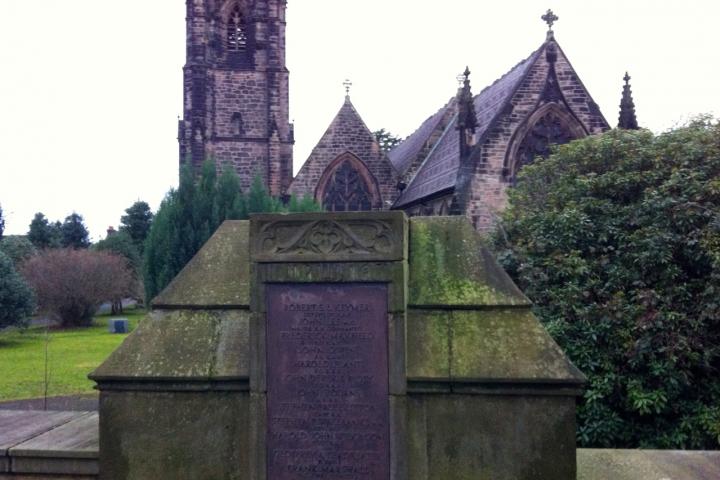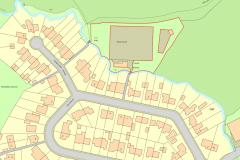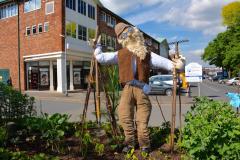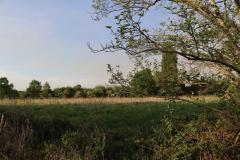
My family have lived in Alderley Edge and the surrounding area for many generations and although I myself am not a native of the village I spent a lot of my childhood growing up there. After a general remark by my late grandfather Harold Smith (Founder of the Alderley History Group) that he would love to know about the men on the war memorial I embarked on what I thought was a small research project.
After studying history for three years at Aberystwyth University in mid Wales I was craving something academic to do so I decided to look into the two of the members on the memorial that I was related to; Gerald Smith and Gerald Leonard Davies.
I succeeded in discovering that Smith was 17 years at enlistment, a gardener by trade and was five foot 6 and a quarter inches tall. (I already knew he was the youngest of his siblings and was the last to go to war). He died August 1918 in Gomiecourt northern France and was likely killed during the capture of Gomiecourt.
However in the case of Davies I was not successful in discovering his story. This got me thinking that it was very important to discover the stories of all the men on the war memorial.
I began by first looking at the Commonwealth War Graves Commission's website, as this has a record of every man that died who is honoured on a war grave or international war memorial. This gave me the leads I needed such as possible addresses, relatives, decorations etc in order to make an effective search on ancestry.com. This holds many records such as service and personal records.
Interestingly I discovered that some of the men are actually buried in the local area such as Alderley Cemetery, St Johns in Lindow and St Bartholomew in Wilmslow.
However, I came across a big stumbling block while researching service records. During the Second World War the building housing many of the records was bombed and a huge proportion were destroyed or damaged. As a consequence for some of the soldiers all I can find is where they died and their age and nothing at all on two or three of the soldiers.
During this time records were not kept as meticulously as they are now. Yet I have discovered some stories of both great heroism and great sadness. For example, a twenty five year old Lieutenant was described "leading his men forward in a very gallant advance (successful)" and that 'he had made himself a favourite with all ranks ... and apologized for being hit.' This shows the sort character that the men from Alderley and the surrounding area demonstrated along with their bravery.
Many of the men on this memorial have gained some of the highest orders granted by not just Britain but also abroad. These include multiple Mentions in Despatches, Military Cross and Distinguished Service Order.
A young captain received his Military Cross "For conspicuous gallantry. During an attack by the enemy he exposed himself freely in order to encourage the young soldiers who were working the machine guns under hot fire. He personally shot three of the enemy with a rifle, and set a fine example till he was severely wounded." This is a clear example of almost self sacrifice in order to inspire men and total bravery.
In terms of international awards two of the soldiers were awarded Order of White Eagle (Serbia) and Silver Medal for Valour (Italy). They were awarded for gallantry and achievements when serving with the Serbian army against Austro-Hungarian army and deeds of outstanding gallantry in war respectively. Citations for these awards were located by searching the London Gazettes archives.
Through this research I have gained an insight into not just the lives of the soldiers but also how going away affected the family they left behind. There are not just stories of men who have died from shrapnel and gunshot wounds but also those that have died from subsequent disease.
For example, a young private in the Cheshire Regiment was brought to Chelsea Hospital with severe back, buttock and arm wounds after being gas shelled. He survived the ordeal of being wounded and then the journey back home where he then died of bronchitis twenty three days after being wounded. There are those who have succumbed from other illnesses such as influenza and dysentery.
The more heartbreaking stories are those who have died due to the mental strain of what they have seen or taken part in. An example of this is a twenty two year old sapper in the Royal Engineers who is recorded as having died after drowning in Mesopotamia. It is suggested in his records that it may have been suicide however they do not prove this conclusively.
Within some of the soldiers' records are letters that mothers and sisters have sent both pleading for the affects of their loved ones to be returned but also with generosity that any food or essentials that they sent was to be shared by the rest of the men in the battalion.
My next step is to research the actual memorial such as the history of it and its effect on the village.
Although I have not fully finished researching the men I have acquired a mass of information and it is my wish to put it all together into some sort of publishable format for others to read. I feel that it is important, more so now than ever before with the centenary this year for people to remember what our soldiers from Alderley Edge and the surrounding parishes endured during the First World War.
Member post by Olivia Johnson.







Comments
Here's what readers have had to say so far. Why not add your thoughts below.
You may find the story of the three Gaiger brothers an interesting link. All three died in the Second World War in around 12 months !